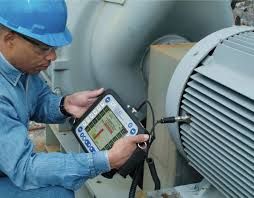 If an electric motor repair shop conducts a thorough teardown and root cause failure analysis of your rotating equipment, surprises in the repair process should not occur.
If an electric motor repair shop conducts a thorough teardown and root cause failure analysis of your rotating equipment, surprises in the repair process should not occur.
When you’ve sent in your rotating equipment to a motor repair shop, you shouldn’t be receiving change orders.
That’s usually a red flag that the repair vendor you’re using isn’t approaching repairs correctly. The problem is that many shops don’t delve deep enough into the RCFA (Root Cause Failure Analysis) during teardown.
What is RCFA?
RCFA (root cause failure analysis) is important enough that you’ll find entire books dedicated to the subject — and the DOE (Department of Energy) has a root cause analysis standard (DOE-NE-STD-1004-92). The DOE defines the root cause as “the fundamental reason which, if corrected, will prevent recurrence of these and similar occurrences …”
In a nutshell, RCFA is an approach to repairs that focuses on tracking down the fundamental reason behind the failure rather than just addressing the symptoms.
Reliable Plant Magazine has a great article on RCFA, introducing it in terms of questions:
- What happened?
- How did it happen?
- Why did it happen?
- How can it be prevented from happening again?
Five Phases of RCFA
To answer the questions just introduced, RCFA involves five phases:
- Data collection
- Assessment
- Corrective action
- Inform
- Follow up
Let’s look at them individually.
Data Collection
In data collection, the technician starts gathering information about the failure – including the how and what was going on. The technician needs information about the conditions before, during, and after the motor failure and what environmental and operating conditions were involved.
However, that isn’t the only data collected. Details about the age of the motor, its repair history, and maintenance history are critical. And last but certainly not least are the results and documentation of visual inspection and testing.
Assessment
The assessment phase seeks out answers to these questions:
- What is the problem?
- How significant is the problem?
- What were the reasons (e.g., conditions or actions) surrounding the problem?
- Why did the reasons exist, working back to the root cause?
There are several different tools used for working back to the root cause failure. Still, they all lead the technician back to “the fundamental reason which, if corrected, will prevent recurrence of these and similar occurrences.”
Corrective Action
Once the root cause has been determined, corrective actions can be identified. If the customer agrees, they can be implemented. And a good motor repair shop will run tests to ensure those actions are working before the motor is returned.
Inform
The final step is to inform the customer of what was found, explaining the testing results and how the assessment led to the cause and recommended corrective action.
Follow Up
Finally, it’s always good to determine if the corrective action is working once the motor is reinstalled and running under typical operating conditions.
How RCFA Can Prevent Change Orders
Now that we’ve introduced RCFA, let’s look at how it can prevent change orders. Suppose one of your motors has started to vibrate so severely it has to be taken offline. Here are some of the different things that can cause vibration:
- Misalignment
- Harmonic distortion
- Voltage imbalance
- Transient voltage
- Current imbalance
- Insulation breakdown
- Rotor damage
- Bearing current/shaft current
Now each of those can have several different causes themselves. For example, bearing current/shaft current can be caused by induced voltage from a VFD, non-symmetrical magnetic fields, or, if it’s a DC motor, leakage current from the armature windings. Voltage imbalance can be caused by faulty circuits, power quality issues, or high resistance connections. And again, these are just two possible causes behind vibration.
The repair shop may stop as soon as they see the failed bearing. You’d get a quote for replacing that bearing. But the vibration issue remains after they replaced the bearing and started the motor up again. They look for another cause and suspect harmonic distortion when further inspection reveals damage to the windings. Addressing that will cost more and take longer than you originally planned.
If RCFA is being used, however, you would not receive a repair quote until the actual source of the failure is discovered, and it would be improbable that a change order is needed. If they find a failed bearing, they’ll track down why the bearing failed. And they won’t miss the windings because they’ll inspect and test every part of the motor before deciding the cause of failure.
Why Root Cause Analysis is Skipped
There are several common reasons motor repair vendors don’t perform RCFA.
First, it takes background knowledge and experience and expensive technical equipment (and the proper operators to run the equipment) to track down the cause of motor failure. Another issue may be a lack of time. Many repair shops will cater to customers interested in getting the motor back ASAP.
And sometimes, the technicians just don’t have the facts they need to track down the root cause. This can include changes in normal operating conditions, other equipment failures that might have had a domino effect, a recent repair that caused different issues or, worst case, a lack of maintenance.
And an unfortunate reason is that they don’t educate their customers on the value of RCFA. Instead, they quote a price to get the work and beat out the other shops that may be performing deep-dive analysis.
Conclusion
At Hi-Speed Industrial Service, we take the quality of our electric motor repairs very seriously. In our SOP (Standard Operating Procedure) for motor teardown, there are significant steps that are non-negotiable in our repair analysis — and that prevent surprises. Contact us today if you are looking for a repair vendor that will get to the root of your problems…accurate root cause failure analysis (RCFA).

